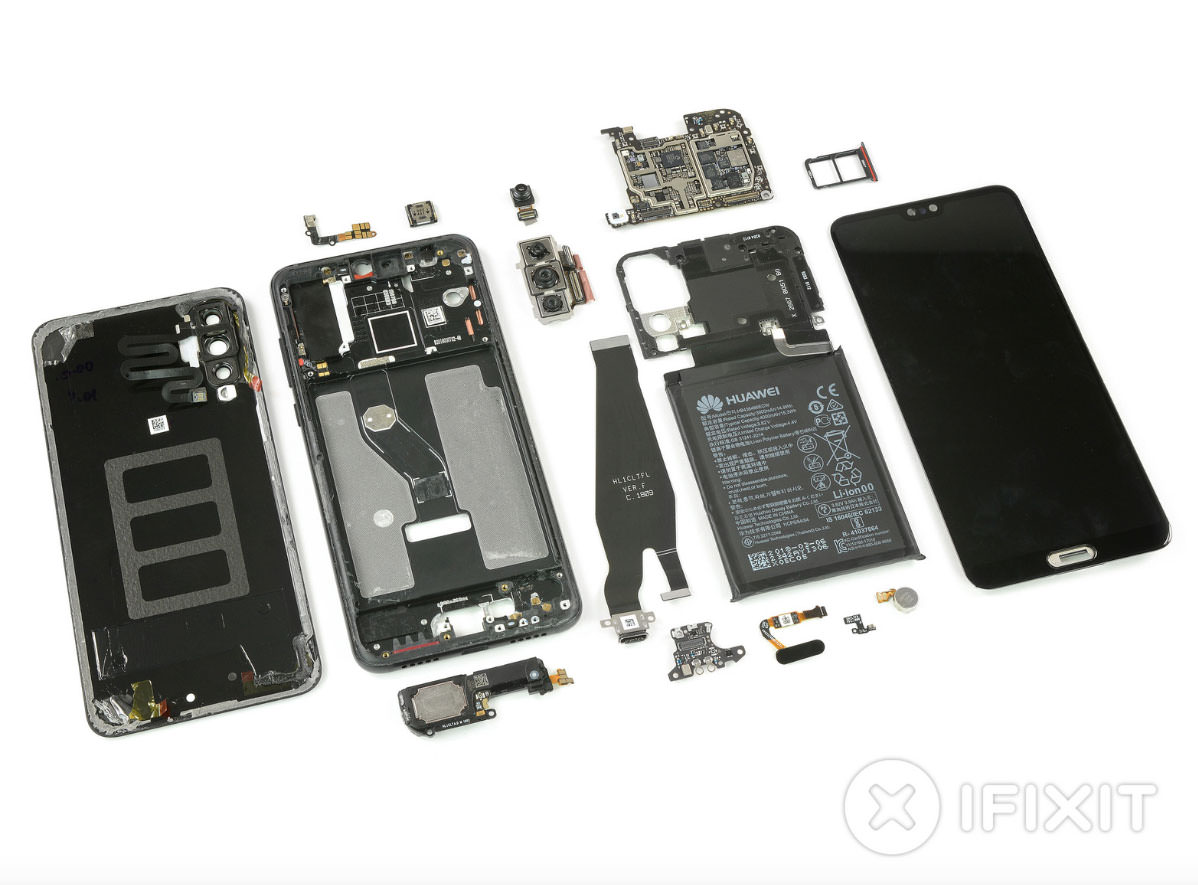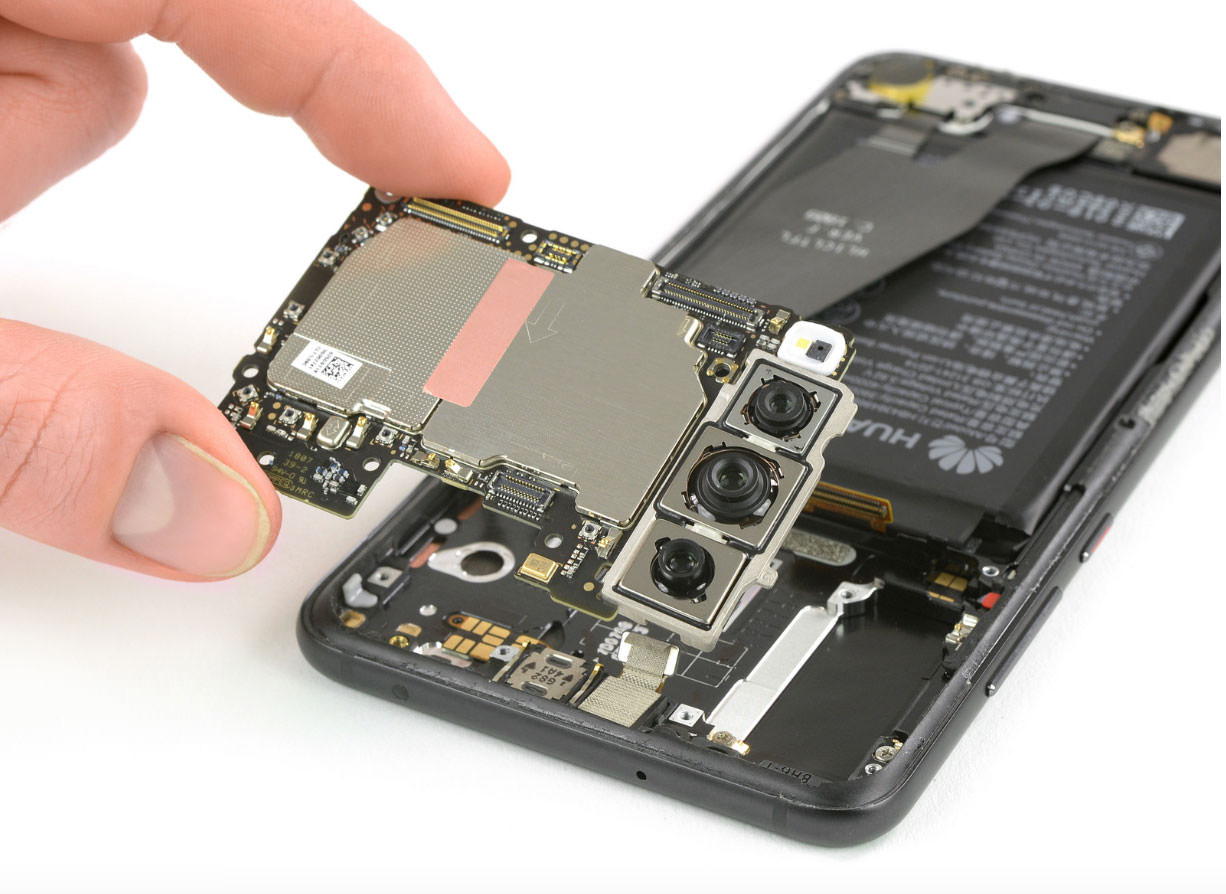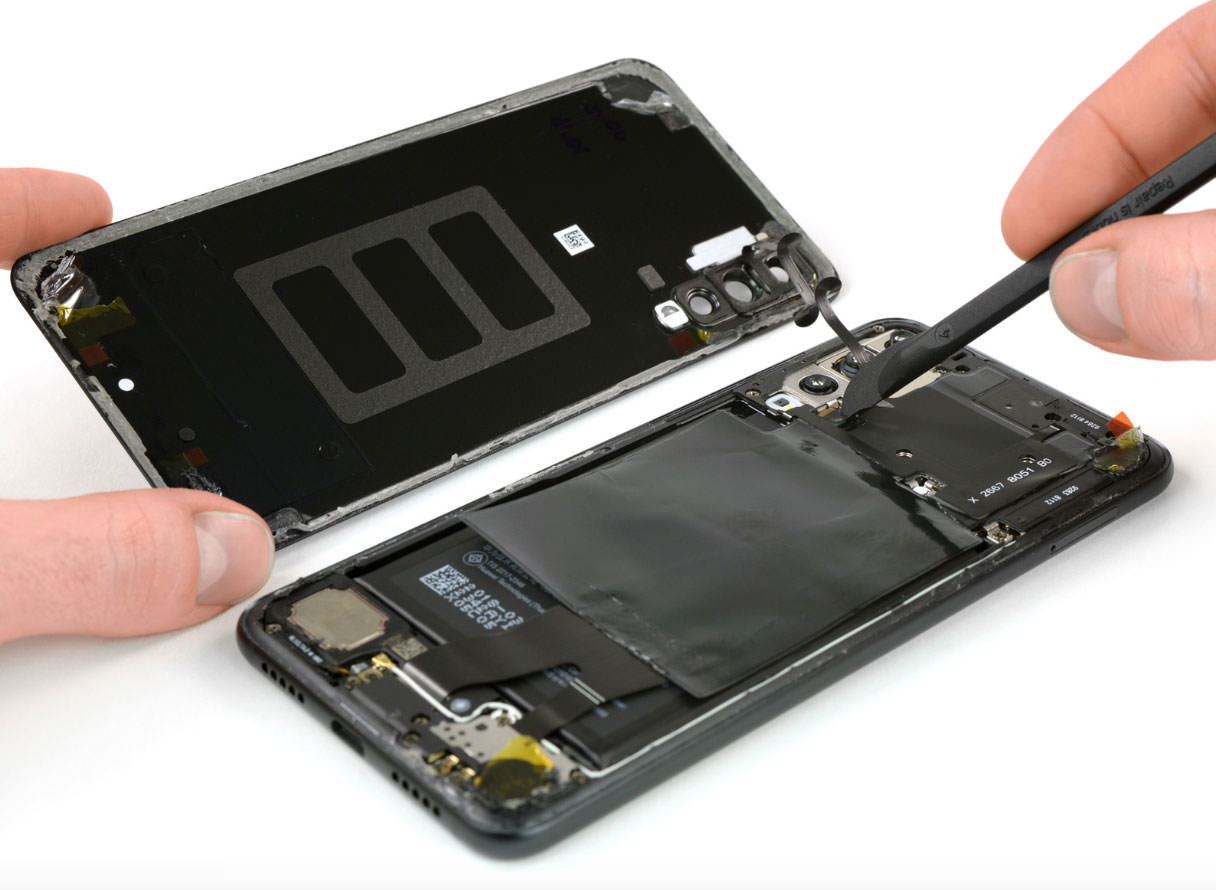Huawei P20 Pro: iFixit completely dismounts it and shows the triple stripped cam
iFixit also puts its hands on the new Huawei P20 Pro by removing it piece by piece. Interesting to discover some news regarding the triple camera that Huawei has decided to implement. Here are all the details.
The new Huawei P20 Pro does not seem to have more secrets and after its presentation, here is that the device has also reached the stores for its marketing. iFixit has been able to realize on it the classic teardown.
That is the disassembling in all its parts to really discover what are the hardware components that the Chinese company has put in place on the device. We know well how the new top of the range of Huawei is in possession of a triple camera at the rear capable of achieving the best score according to tests performed by DxO Mark.
As mentioned, iFixit wanted to ” open ” the Huawei P20 Pro completely and discovered that the OIS technology, ie the optical image stabilization, is present in all three sensors and not as claimed by Huawei during the presentation phase. Clearly, the Chinese company has not activated the OIS for the other two cameras via software due to the absence of necessity, but the optical stabilization is also present for the other two cameras.

Recall how the new Huawei P20 Pro is characterized precisely by a triple camera to the rear consisting of a main sensor 40MPx (f/1.8) in RGB format, then a sensor 20MPx (f/1.6) that instead is monochromatic and finally a telephoto lens 8MPx (f/2.4) capable of zooming up to 5X. A highly prestigious technical sector and we have partly seen its behavior in some live shots.

Continuing with the teardown, we discover how the experts of iFixit have found a fairly modular construction of the device with easily decomposable components. In fact, the difficulty that led to a vote of 4 out of 10 as reparability, lies in the initial opening of the smartphone that due to the display fixed with a double layer of adhesive could easily break in this phase. Even the battery does not seem to allow replacement, and certainly this can only be considered a point against the reparability.


